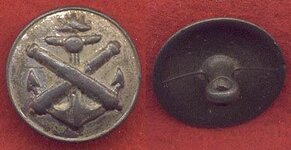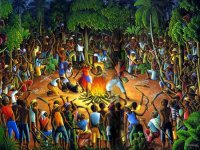ScubaFinder
Bronze Member
- Jul 11, 2006
- 2,220
- 530
- Detector(s) used
- AquaPulse AQ1B - AquaPulse DX-200 Magnetometer
- Primary Interest:
- Shipwrecks
OK, we've had a little research conundrum for several years now. We found a French shipwreck that we believe to be very important, but we've never really been able to trace it down with 100% certainty. We believe it is a transport ship that had two purposes in the New World...one of them being to deliver supplies to help stop the Louisiana Purchase. This might be a neat part of American history if we can prove the ship name and purpose.
We think these buttons may be a very valuable clue to our ongoing research, knowing the regiment (or anything) of the soldiers who wore these will give us a new starting point for archival research now that all other leads have come up less than stellar. We found the boat on the north coast of the Dominican republic, in Monte Cristi bay. We believe it is a French ship from somewhere around the very late 1700's or very early 1800's.
I'm not above begging, and we're certainly not above giving anyone who can help a little "gift" from the shipwreck when we take possession of the artifacts (they are in the governemnt lab at the moment). thanks in advance for any help...we are desperate and our researcher is busy on other tasks.
Sooo, what can you tell me about these?
Jason



We think these buttons may be a very valuable clue to our ongoing research, knowing the regiment (or anything) of the soldiers who wore these will give us a new starting point for archival research now that all other leads have come up less than stellar. We found the boat on the north coast of the Dominican republic, in Monte Cristi bay. We believe it is a French ship from somewhere around the very late 1700's or very early 1800's.
I'm not above begging, and we're certainly not above giving anyone who can help a little "gift" from the shipwreck when we take possession of the artifacts (they are in the governemnt lab at the moment). thanks in advance for any help...we are desperate and our researcher is busy on other tasks.
Sooo, what can you tell me about these?
Jason












 On the Florida coast, I would not so easily throw a location out there, but this country handles things a little differently, and I like it.
On the Florida coast, I would not so easily throw a location out there, but this country handles things a little differently, and I like it.